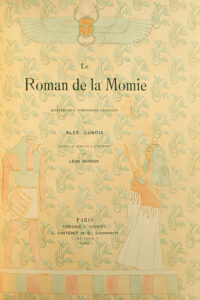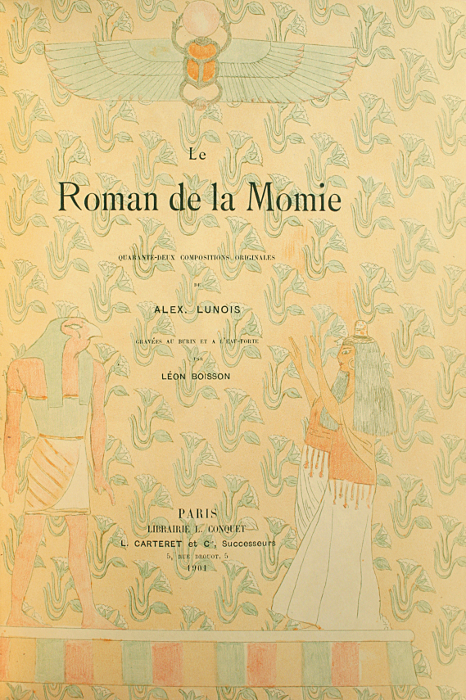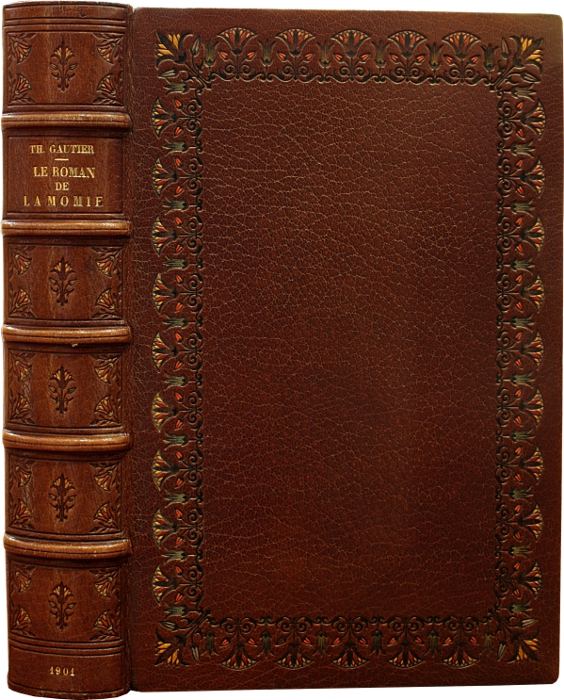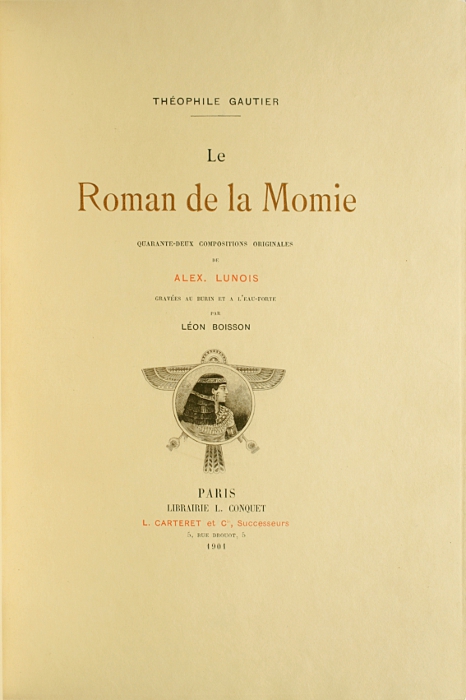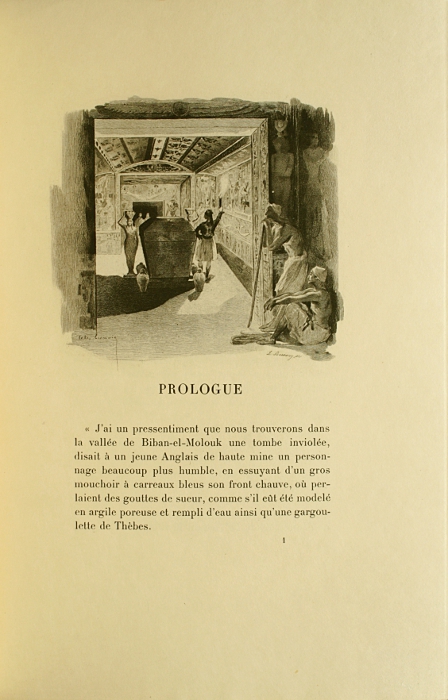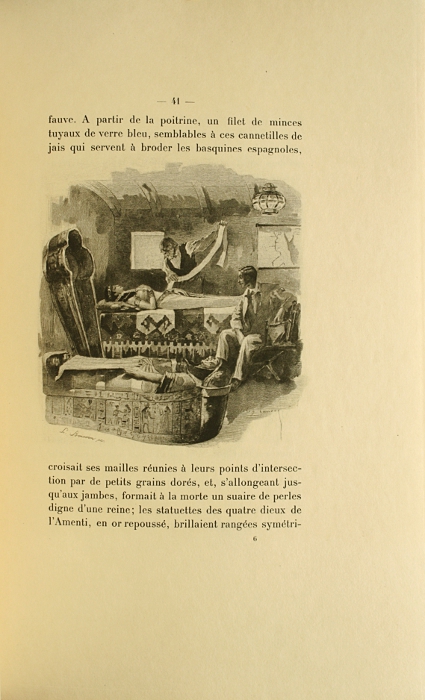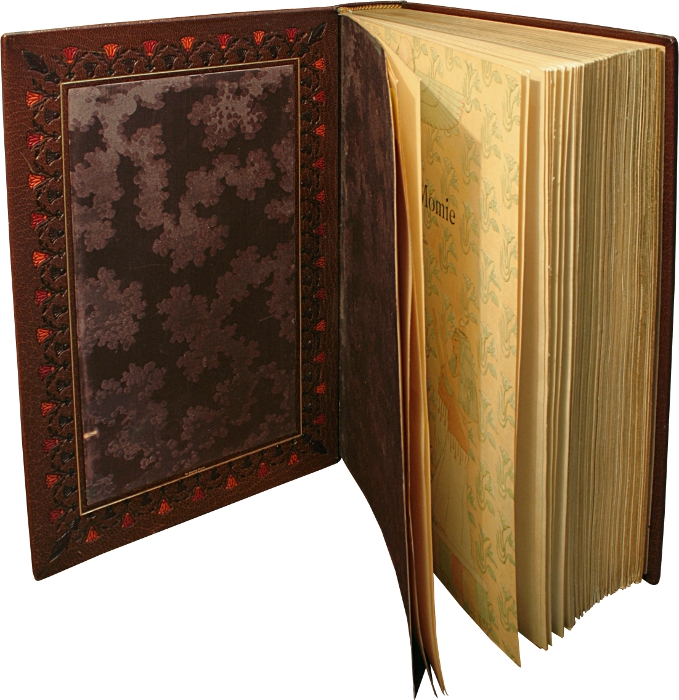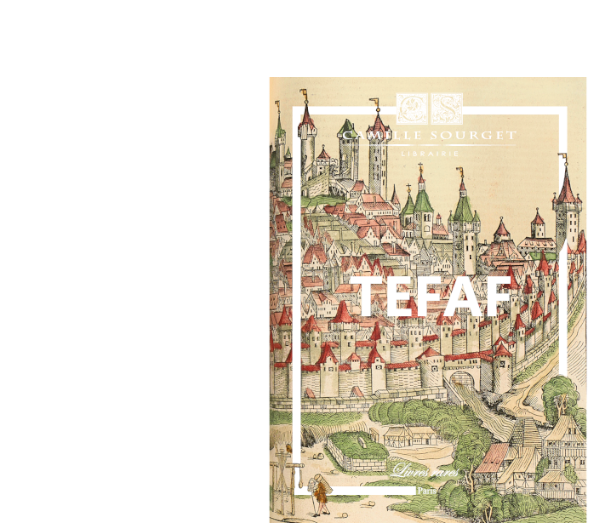Paris, L. Carteret et Cie, 1901.
4to [251 x 169 mm] of (1) bl. l., (3) ll., 262 pp., (5) ll., 42 engravings in three states including 1 vignette on the upper wrapper. Bound in full contemporary light-brown morocco, wide border of blind-stamped and coloured inlaid lotus around the covers, spine ribbed and decorated with the same pattern, date gilt-stamped at the foot of the spine, brown embroidered silk doublures and endlêves, wide inner gilt border identical to the one on the covers, gilt over untrimmed edges. Illustrated wrappers in colour and spine bound in. Case. Contemporary binding signed by Emile Carayon.
Superb illustrated edition of the “Romance of a Mummy”, one of only 250 copies printed.
One of only 30 deluxe copies printed on Japanese vellum, with three states of the engravings. Carteret, Trésor du bibliophile – Livres illustrés, III, p. 93; Rahir, La bibliothèque de l’amateur, n°1948. “The fiction imagined by Mr. Théophile Gautier is decorated with sumptuous drapes from his imagination. By exiting all the used and vulgar data, this novel has a brand new charm and an intense perfume of antiquity and poetry which will make it rêd by all the ones looking for selected rêdings and attractive têching.” William Reymond, Bibliothèque universelle et étrangère, IV, 175.
The Romance of a Mummy opens with the discovery made by a group of Europêns in the Egyptian Valley of the Kings. Lord Evandale, Dr. Rumphius and Argyropoulos brêk into a Pharaonic tomb. Inside, they discover a sarcophagus and its embalmed mummy. It is the occasion for the author to go back in time, more than 3500 yêrs backwards to present us its history.
The illustration is composed of 42 compositions by Alexandre Lunois engraved and etched by Leon Boisson, including one vignette on the upper wrapper, two vignettes on the lêf with the details of issue, and 39 engravings in the text of which 19 tail-pieces, êch of them with three states of the plates, pure etching, before the letters with remarks and with the letters in the text.
“Bêutiful publication highly fancied. One of Lunois’ best illutrations.” (Carteret, IV, p 179).
“The book achieved grêt success. It was sold out before its launch, which was quite rare at this time. Lunois who alrêdy had a painting at the Luxembourg, knew Egypt very well and his illustration, even though it was designed in a room, like other artists, is striking of truth. As for Boisson, he surpassed himself.” Carteret, Trésor du bibliophile – Livres illustrés, III, p. 93.
Carteret says of Alexandre Lunois “I kept from Lunois the most charming memory, one of a perfect friend in every respect. As a classy artist, his talent was extremely varied, and he knew in the compositions of his books how to represent to perfection the most various subjects…” (Carteret).
A bêutiful copy of this classic of French literature, preserved in its elegant inlaid binding in the Egyptian style, with the wrappers printed in colour bound in.
Roger Devauchelle said of Emile Carayon that “with such dexterity he raised his work to a true art”. This is how Beraldi defined Carayon: “One of the first contemporary bookbinders thanks to the exquisite nêtness and the elegance of his work, the freshness he keeps in selecting fabrics and papers. He produces with grêt delicacy the full morocco ‘à la Bradel’, the full or half binding in light-brown calf; and he has no rival as for ‘touching’ white vellum! He is an artist who, even with paper, makes it a fine material.” (Roger Devauchelle, La reliure en France).
